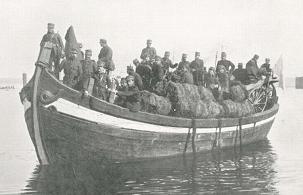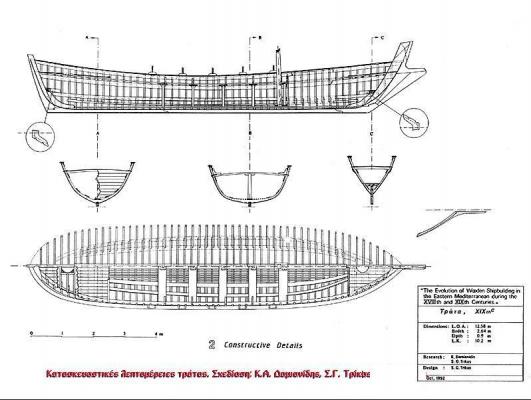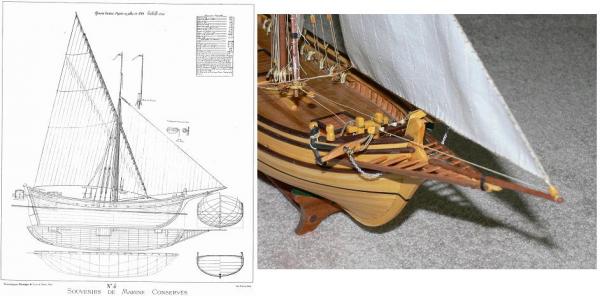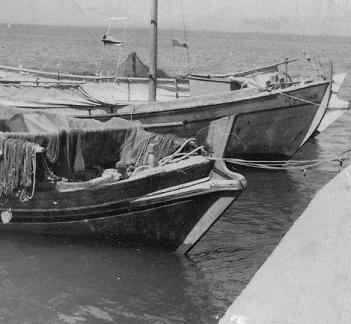-
Posts
635 -
Joined
-
Last visited
Content Type
Profiles
Forums
Gallery
Events
Posts posted by Thanasis
-
-
Hi Matija. Congratulation, your model looks great.!I would like to ask you about those "cut stems" close to the masts...Are they a kind of vertical capstans (at least the one in the front looks like) or something else.Many thanks and allow me to place a photo of a "τραμπάκουλο" from the other side of the Adriatic sea.Thx
-
-
Many thanks for your reply as well for the photos of the procedure Ron.I have already made my experiments and I have also come to similar to your conclusions.However I would like to add that this method of "false seizing", contains also a rate of 15-20 percent of "fault seizing".Thanks
-
Hi all.
The issue of false / zip seizing has been set before here… (http://modelshipworld.com/index.php/topic/1255-question-on-false-seizing-zip-seizing/)
So Homer, I would like to know weather you have come to an effective way, where the thread doesn't stick on, from whatever kind of material you use as a rod, to make loops around.
Many thanks
-
Hi Jerry. Congratulation for your build, it's at least impressive...For the historical accuracy allow me some notes..The "Sun of Macedonia" actually is the "Vergina Sun"
As about the "Macedonian sites" for the time being, there is only Macedonia as a territory at north Greece and a State named by the UN organization as (FYROM).
Thank you
-
-
Sorry if you haven't finished but I would like to ask whether this rod on the beak is a potential jib boom, or something else....
Thx
-
-
Thank you Zoran. I have made also my homework...
 Fishes can stay fresh until they reach the shore, by keeping them wet under a tent or by covering them with wet textiles.I tend to believe that since the boat could be heavy loaded and because of the Adriatic sea conditions, it was safer to sail as a closed hull boat, rather than as an open one. But I leave it to the fishermen...
Fishes can stay fresh until they reach the shore, by keeping them wet under a tent or by covering them with wet textiles.I tend to believe that since the boat could be heavy loaded and because of the Adriatic sea conditions, it was safer to sail as a closed hull boat, rather than as an open one. But I leave it to the fishermen... Thx
Thx -
-
Are those four (4) hatches covering small storerooms, or just openings for the fishermen to be standing up inside, while they pull up the nets from the sea...Thx
-
At http://it.wikipedia.org/wiki/Leudo I found this...
Leudo
"Il leudo o loido (in lingua italiana leuto o liuto, in lingua ligure lœidu o leûdo pron. /'løɪdu/[1]) è il vocabolo dato, in Liguria, ad una famiglia di barche a vela latina che sono state utilizzate per le attività di cabotaggio (trasporto di merci) fino agli ultimi decenni nel Novecento, in tutta l'area mediterranea."
Translated
"The leudo or loido (in Italian lute or lute , in the Ligurian language lœidu or Leudo pron. / 'løɪdu / [1] ) is the term given, in Liguria , to a family of boats with lateen sails that were used for the cabotage (for freight transport) until the last few decades in the twentieth century , in the whole Mediterranean area."
Well after this mix-up (?) I think the title of the build log should being referred to Trajta only as a fishing boat.
Thx
-
Zoran, I really don't know... As the log goes on, I think the only connection between those two vessels apart of the name is just something... drom the beak.
I think Gr Trata comes more narrow and long. It was an open hull boat, with small decks at the bow and stern in some versions...Its purpose was the fishing itself and not just the transportation of the catch. Sailing mainly by the use of oars, there were benches for the paddlers.See the below drawing from the book "The evolution of shipbuilding in the Eastern Mediterranean during the 18th-19th centuries." and you can see more photos of Trata vessels at http://www.naftotopos.gr/index.php?option=com_phocagallery&view=category&id=246:trata&Itemid=622〈=elAllow me also two queries...-As in the real boat I guess, you placed a bulwark on the left side of the stern to keep the nets on deck...But if she was made just to transport the catch, what the necessity for nets to be on her deck.-From what kind of vessels she was collecting the catch to be transferred ashore.Thx -
Ok. Let me be more specific.I do accept what you saying about the protruding construction on the Trajta or Leut. What I'm trying to point out is that this construction (with its extended stem and the side supports of the beak) has many similarities, with the beak of other vessels in the Mediterranean Sea.My point of view is that no matter the size of the boats, this construction, was not initially constructed to help the approach to the boat but and without being an expert, this is an influence from older vessels.As you have also said the tradition was passed around the neighboring nations and some of them certainly made adjustments.If you like, I'm finding more similarities between the beak of the Greek Trata and the Maltesian Xprunara-Sperunara, but I made all the above thinking-discussion because of the name Trajta-Trata....Btw. Having seen in photos the model of Mr Skomeršić, please give him my best regards (if he still remembers me…)
 Thx
Thx
-
-
Well, there has been some discussion about this "walking board" also for "our" Trata.
Greek Trata hasn't had this flat timber on the beak, so we can't say for sure whether the reason was to help the embarkation or disembarkation. If was so, then every fishing boat should have such a similar construction.
It could be a remnant of beaks of older Mediterranean vessels (like tartana) that was utilized according the needs by some nations. …
Thx
-
-
-
MarisStella, it just appeared strange to me that a hull planking can be completed starting only from the gunwale (or the margin plank) and yes, it's not my method.Most of the times the shape of the hull doesn't allow a plank or the planks of the same row, to reach the edges (stem at bow and stern).At least without force and some work with putty afterwards...And I'll agree with you that there is nothing wrong in ship modeling, although you should consider going along with logic and aesthetic...
Thx
-
Maris Stella seeing the new photos, am I guessing right...The planking is going to be completed by going down from the margin plank to the keel.?I thought it would end at the middle of the hull, making also progress from the keel...Thx
-
-
-
Hi Newton.
Have you tried searching the web by the option of your browser "Images" and the words "Santa Maria crows nest"...
Thx
-
I guess you're right, since as far I know, the "Greek Trata" (τράτα) was used only for fishing. But we're certainly sharing the shape of the hull and the name modifications...I'll be here...
 Thx
Thx



















Trabakul by Mfelinger - FINISHED - 1:30 - Adriatic Sea traditional sailing ship
in - Build logs for subjects built 1851 - 1900
Posted · Edited by Thanasis
Thanks for your comment Matija.